Which ERP to choose in 2025 if you work in finance in Europe
A practical guide for CFOs, controllers, and finance teams in Europe: how to choose the right ERP in 2025, what traditional systems leave out, and why visibility matters more than ever.
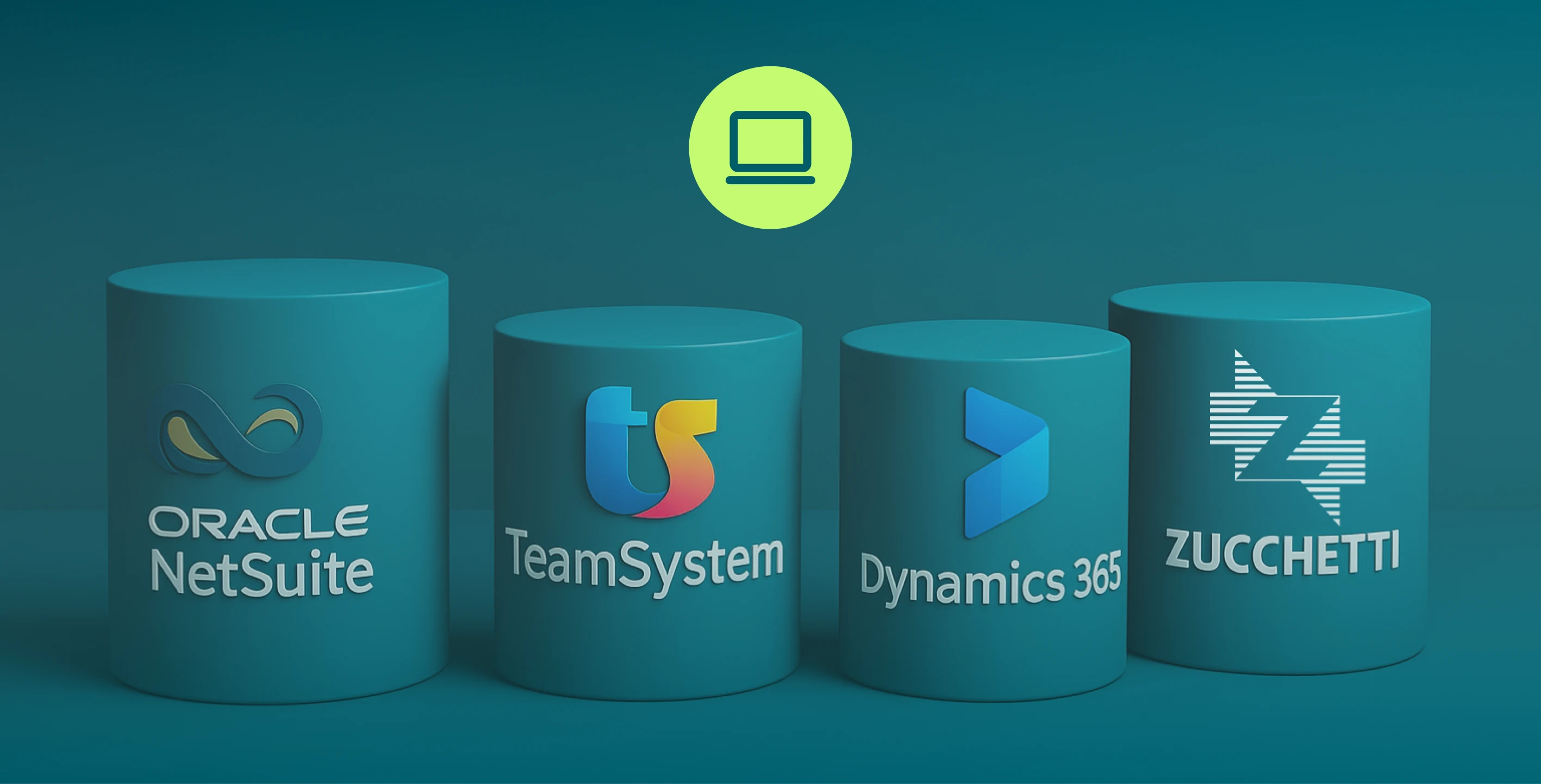
Choosing an ERP is one of the most critical decisions for any finance team.
It’s not about modules or interface. It’s about what will actually work — every day, with real data, under real-world constraints.
On paper, most ERPs look the same. In practice, the differences show up fast. Especially in markets like Italy and Spain, where tax rules, org structures and approval flows follow their own logic.
In this article, we break down the strongest ERP platforms in Europe today — with a focus on which ones deliver real value locally, and how to choose the right one for your business.
Let’s get into it.
What an ERP really needs to do in 2025
Core functions, meaningful differences, and five questions every finance team should ask before signing anything
By 2025, most ERP platforms cover the same core areas: accounting, order management, invoicing, procurement, inventory, treasury.
But it’s not about how many modules they offer. It’s about how well they’re implemented, integrated, and maintained.
Finance teams need sharper answers.
Here are five questions to test whether a system will actually work — day in, day out.
1. Can you see what’s happening, as it happens?
Criterion: real-time operational visibility
An effective ERP shows spend, cash flow, and budget variances in real time. No exports. No delays. No manual rework. Finance teams need live data they can act on — not numbers that trail behind.
2. Does it work with the tools you already use?
Criterion: native, frictionless integration
“API available” isn’t enough. The ERP must sync cleanly with approvals, forecasting, payments, BI — without duplicates or delays. PowerBI, DocuSign, procurement and spend tools all need to stay in sync.
3. Does it handle local tax compliance without add-ons?
Criterion: built-in regulatory coverage
Tax rules in Italy and Spain are complex. A suitable ERP includes FatturaPA or SII, withholding, split payments, statutory reporting, digital archiving — all by default. External add-ons mean recurring risk and cost.
4. Can it scale with new teams, locations or workflows?
Criterion: modularity and controlled scalability
The right ERP allows selective onboarding and stable customisation. It shouldn’t need a full relaunch every time a policy or process changes. Progressive rollout, targeted upgrades, autonomous flows — that’s real operational scale.
5. Can you see who approved what, under which budget?
Criterion: traceability and distributed control
Most ERPs record transactions. Few track decisions. Who approved the spend? When? Against which allocation?
These details rarely appear in standard systems — yet they’re exactly what prevents overspend, duplication, and missed renewals.
If you're assessing an ERP, ask: Can it connect with tools that manage the operational flow before the ledger?
With solutions like WithLess, this gap comes back under control — and finance teams can act, not just reconcile.
WithLess, the first AI-powered platform that automates procurement and expenses, was built to manage the operational side that sits outside the ERP. See how it works.
ERP platforms to consider in Europe in 2025
A selection for people who work in finance — not for those writing RFPs
The European ERP market is crowded, but far from uniform. Many systems claim global reach, full modules, and built-in AI.
Very few actually perform well in operational contexts where accounting must follow local standards, approval flows follow internal logic, and finance teams need clear answers, not just raw data.
In this section, we’ve selected the ERP platforms that matter most for businesses operating in Italy and Spain.
Each one is assessed against five criteria:
- Value for the finance team – Does it support day-to-day work, or get in the way?
- Adaptation to local requirements – Is it ready for Italian and Spanish tax rules?
- Integration and flexibility – Does it fit existing flows, or impose its own?
- Support and adoption – Is it used locally, and can you find qualified support?
- Limitations to watch – Where do users report friction or failure?
Oracle NetSuite: Cloud-native ERP for international businesses operating in Italy or Spain
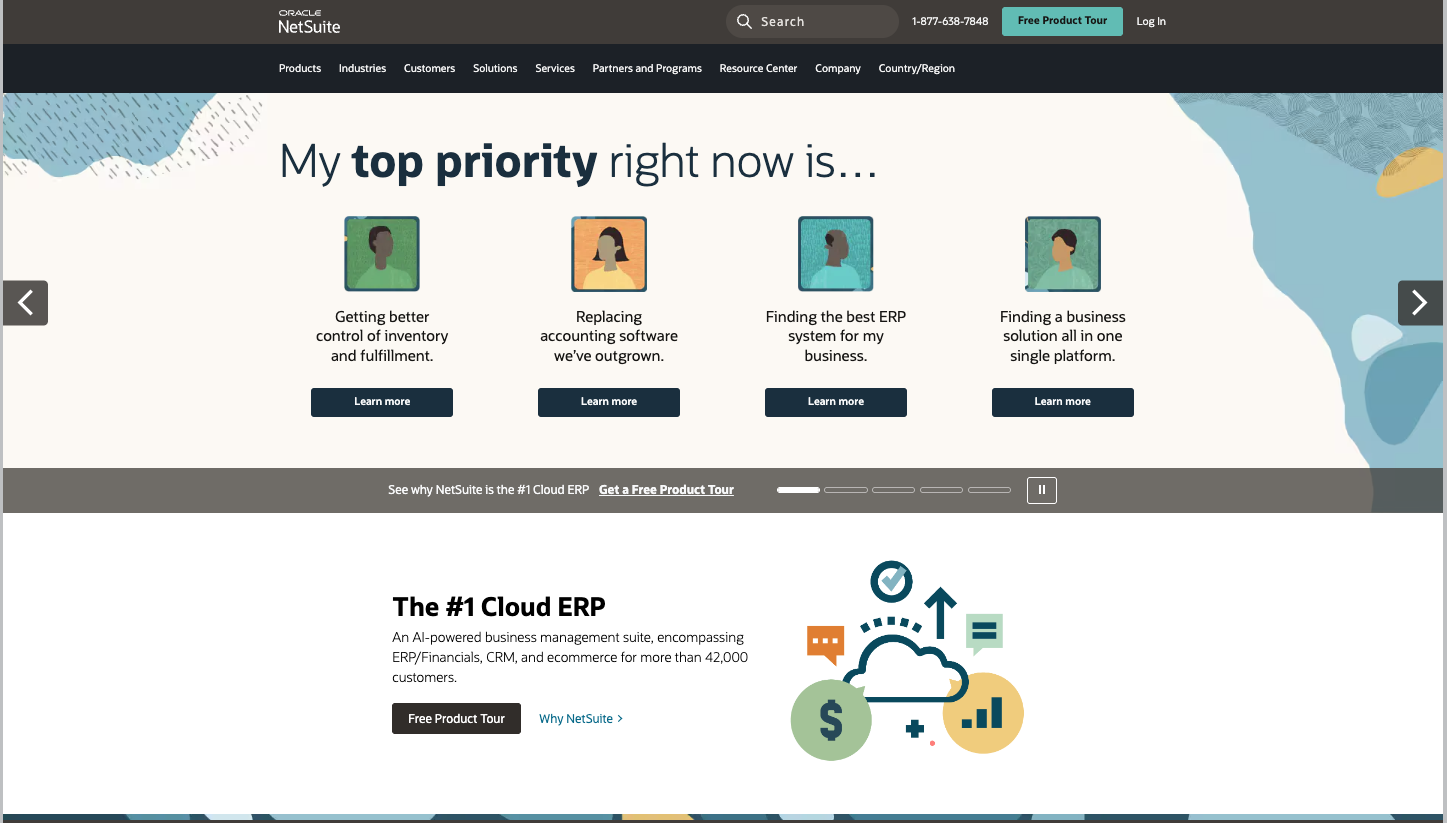
Oracle NetSuite is one of the most established cloud ERP platforms globally.
Designed for growing, distributed or multi-entity businesses, it offers a modular suite covering finance, procurement, CRM, projects, and control — all through a 100% web interface, with continuous updates and no on-prem infrastructure.
In Italy
NetSuite is increasingly adopted by Italian companies — particularly in tech, consulting and digital services — looking to scale with a leaner structure.
Local tax compliance (FatturaPA, IVA, ritenute, bilancio civilistico) is supported via official bundles or certified partners.
A strong fit for group structures seeking solid consolidation and intercompany control.
In Spain
Popular among mid-market firms and multinationals with Iberian operations.
Supports SII, IVA, reportistica fiscale autonómica, and integrates easily with external tools for workflow and reporting.
Ideal for fast rollouts, remote accessibility, and a robust SaaS model.
Pros
- Fully cloud-based ERP: stable, always accessible, updated with no downtime
- Architecture built for international scale: native multi-entity, multi-currency support
- Configurable finance workflows — no technical lock-in
- Strong integration with WithLess: real-time approvals, visibility, renewals and vendor governance
- Large user community and growing partner network
Cons
- Some tax features require initial configuration via partners — not plug-and-play
- Standard financial reports are basic; many teams use external tools for advanced reporting
- UX can feel clunky for complex operational flows (e.g. logistics, manufacturing)
Our take
Value for the finance team: ⭐⭐⭐⭐⭐ (excellent for modern finance structures)
Local compliance (IT/ES): ⭐⭐⭐⭐☆ (full coverage via partners)
Integration & flexibility: ⭐⭐⭐⭐⭐ (high — strong base for automation)
Local support & adoption: ⭐⭐⭐⭐☆ (extensive, expanding network)
Limitations to consider: Initial tax setup, advanced reporting requirements
Microsoft Dynamics 365 ERP: pros and cons for Italy and Spain in 2025
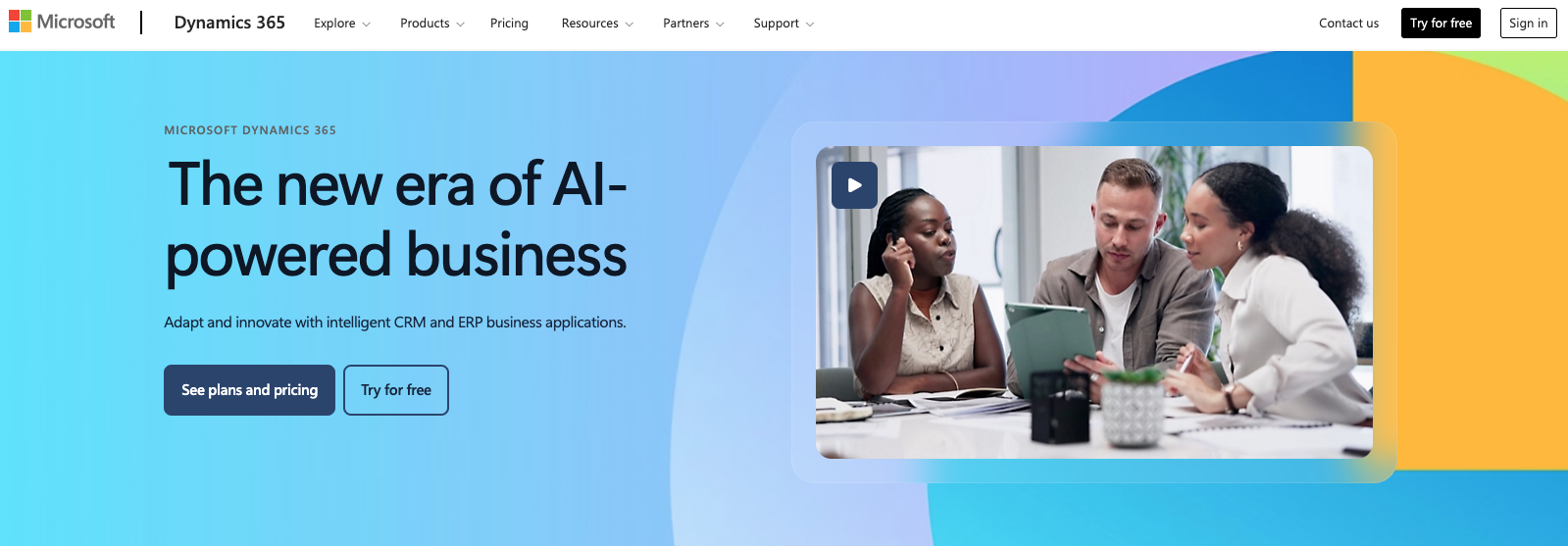
Dynamics 365 is Microsoft’s combined ERP and CRM suite, built on Azure and natively integrated with tools like Office 365, Teams, Power BI and Power Platform.
It covers finance, operations, procurement and project automation — with a more accessible interface than most enterprise-grade ERPs.
In Italy
Widely used among mid-market and large companies already invested in the Microsoft stack.
Solid tax coverage (FatturaPA, IVA, libri contabili), though execution depends heavily on the implementation partner.
Popular for its seamless use alongside Excel, Outlook, Power BI and Teams.
In Spain
Well established in services and distribution. Meets Spanish legal requirements (SII, IVA, reportistica autonómica) via certified connectors. Often used by multinational firms already operating in Microsoft environments.
Pros
- Familiar UI for teams already using Microsoft tools
- Modular design allows phased rollout (starting with finance)
- Native integration with Power BI and collaboration platforms
- Strong flexibility-to-cost ratio in the mid-market
Cons
- Implementation quality depends heavily on the partner
- Local tax compliance isn’t native — requires custom setups or third-party modules
- Performance may lag under high volumes without advanced tuning
- Approval flows and controls are less structured than in other ERP platforms
Our take
Value for the finance team: ⭐⭐⭐⭐☆ (strong if already on Microsoft stack)
Local compliance (IT/ES): ⭐⭐⭐☆★ (available, not native)
Integration & flexibility: ⭐⭐⭐⭐☆ (high, but needs setup)
Local support & adoption: ⭐⭐⭐⭐☆ (broad partner network)
Limitations to consider: Partner reliance, volume tuning, approval flows
SAP S/4HANA Cloud: Enterprise-grade ERP with full tax localisation for Italy and Spain
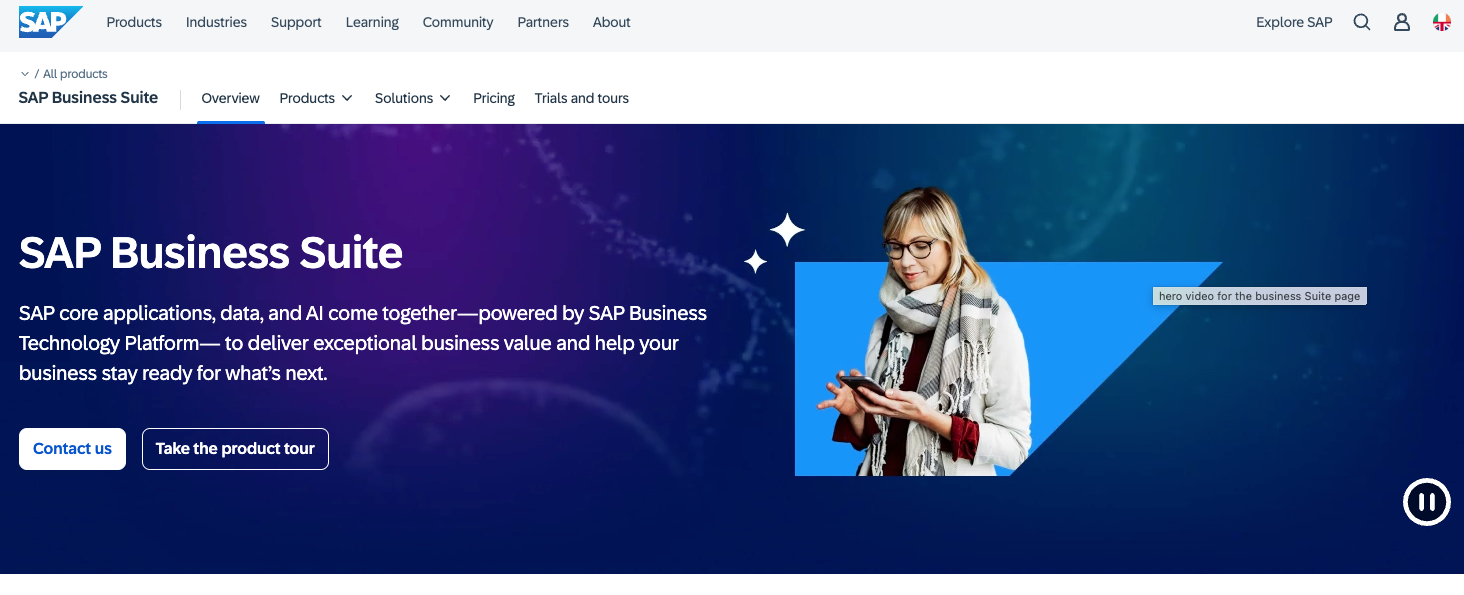
SAP S/4HANA Cloud is SAP’s cloud-native ERP, built for mid-sized and large enterprises. It covers finance, supply chain, procurement and HR end to end, and runs on the SAP HANA infrastructure — enabling high-performance analytics and data consolidation at scale.
In Italy
SAP is widely adopted by Italian corporates, especially in industrial sectors and multinational groups.
Strong compliance with local tax law (FatturaPA, split payment, digital archiving), backed by a broad partner network and native integration with BI and performance management tools.
In Spain
Well established in manufacturing, energy, and telecoms. Excellent localisation for SII, VAT, legal reporting and regional tax frameworks. Certified local partners are widely available across Spain.
Pros
- Broad functional coverage, scalable for complex operations
- Strong tax localisation for both Italy and Spain
- Excellent integration with analytics and approval workflows
- Backed by official SAP support and a wide consultancy network
Cons
- High implementation and ongoing costs
- Requires mature IT governance to ensure process integrity
- Customisations are complex and impact system maintenance
- Long onboarding: steep learning curve for non-technical finance teams
Our take
Value for the finance team: ⭐⭐⭐⭐☆ (high — when properly configured)
Local compliance (IT/ES): ⭐⭐⭐⭐⭐ (fully covered)
Integration & flexibility: ⭐⭐⭐☆☆ (IT-heavy, complex to adapt)
Local support & adoption: ⭐⭐⭐⭐⭐ (very strong partner ecosystem)
Limitations to consider: Cost, complexity, workflow rigidity
Infor CloudSuite ERP for manufacturing: finance advantages and trade-offs
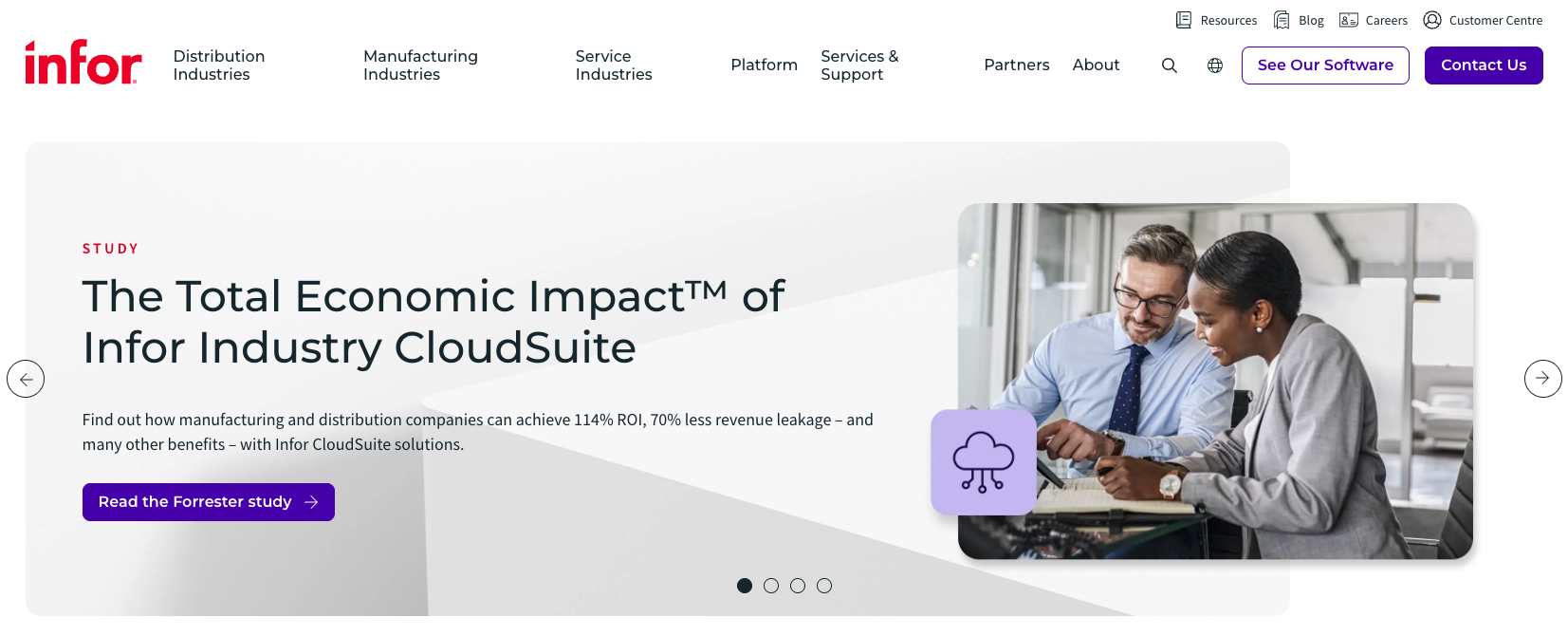
Infor CloudSuite is Infor’s cloud ERP suite, purpose-built for complex industrial sectors — including manufacturing, distribution, automotive, food and pharma.
Running on AWS, it combines core ERP functions with advanced tools for planning, traceability, and quality management.
In Italy
Less widespread than generalist ERPs, but used by industrial firms with specific vertical needs (e.g. batch traceability, serialisation, complex BOMs). Local tax compliance is available, though typically delivered through custom projects led by specialised partners.
In Spain
More established than in Italy, especially in manufacturing and food/agri sectors. Covers Spanish tax requirements (IVA, SII, libros registro) and supports distributed logistics flows. Valued for its breadth in production control and supply chain management.
Pros
- Strong vertical capabilities for industrial sectors
- Advanced support for warehouse, production and traceability flows
- Modern cloud platform (AWS) with regular updates
- Native integration with MES, PLM, and quality control tools
Cons
- Less suitable for lean finance teams or non-industrial businesses
- Italian tax localisation is available but less turnkey than other ERPs
- Requires deep vertical expertise for both implementation and maintenance
- UI is dated in some non-core areas
Our take
Value for the finance team: ⭐⭐⭐☆☆ (strong in industrial contexts only)
Local compliance (IT/ES): ⭐⭐⭐☆★ (available, often custom)
Integration & flexibility: ⭐⭐⭐⭐☆ (excellent for supply chain, less so for finance)
Local support & adoption: ⭐⭐⭐⭐☆ (strong in Spain, moderate in Italy)
Limitations to consider: Technical onboarding, tax localisation, legacy UX
Sage X3: Flexible European ERP for mid-market companies in Italy and Spain
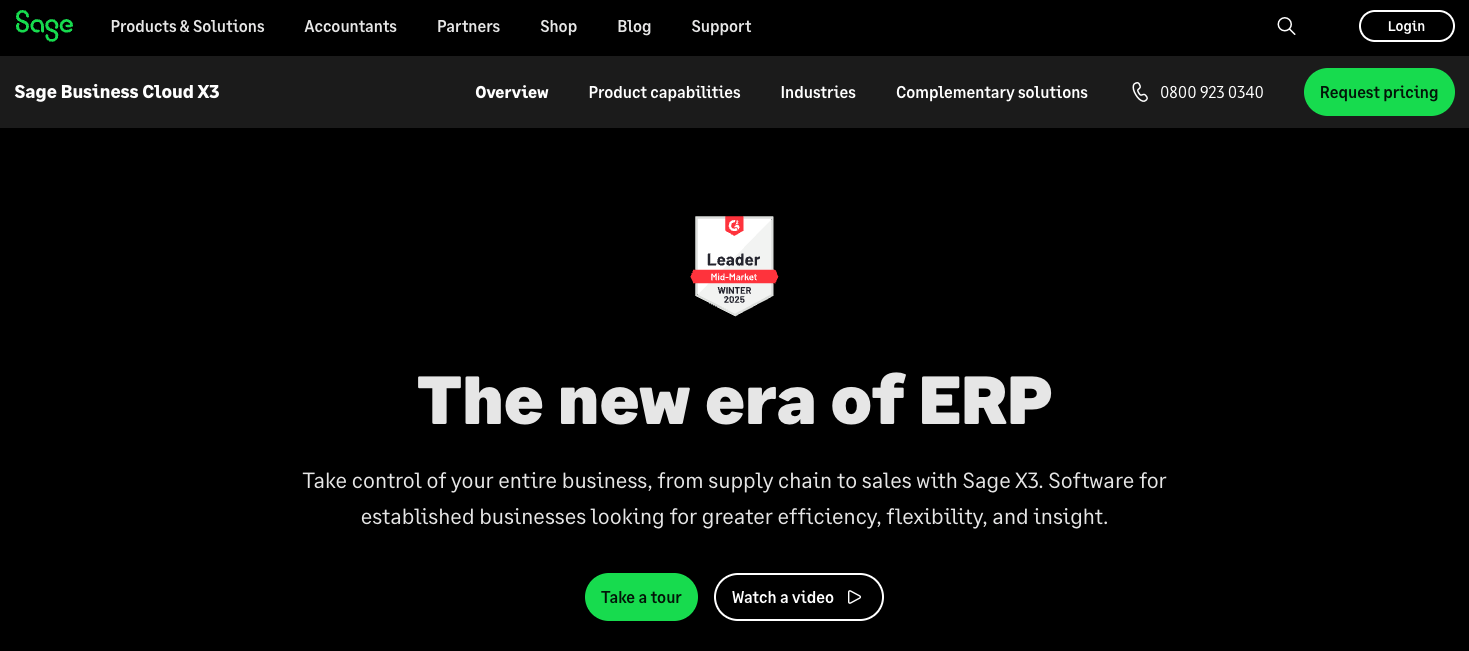
Sage X3 is a modular ERP designed for mid-sized businesses operating in regulated or multi-country environments.
Developed in Europe, it focuses on accounting, operational flows and regulatory adaptability. Customisable and accessible even to lean teams, without compromising on functional depth.
In Italy
Less common than major ERPs, but used by groups with Italian subsidiaries and mid-market firms needing flexible compliance and control.
Local tax coverage (e-invoicing, VAT ledgers, withholding) is available via certified partners. Often chosen as a replacement for rigid or outdated systems.
In Spain
More prevalent than in Italy, particularly among industrial SMEs and companies with distributed operations.
Covers SII, VAT, tax reports and accounting requirements under Spanish law. Recognised for striking a balance between functional depth and operational simplicity.
Pros
- European-built: strong focus on compliance and management accounting
- Flexible workflows and solid customisation options
- Modern interface with simpler UX than many legacy ERPs
- Ideal for finance teams seeking visibility and autonomy without relying on IT
Cons
- Partner network is smaller than SAP or Microsoft
- Some modules (e.g. advanced supply chain) lack depth
- Local tax setup and reporting rely on partners
- Less suited for complex manufacturing or multi-brand structures
Our take
Value for the finance team: ⭐⭐⭐⭐☆ (great balance of flexibility and control)
Local compliance (IT/ES): ⭐⭐⭐⭐☆ (well localised via partners)
Integration & flexibility: ⭐⭐⭐⭐☆ (good autonomy for finance teams)
Local support & adoption: ⭐⭐⭐☆☆ (moderate in IT, stronger in ES)
Limitations to consider: Module depth, partner availability
ERP platforms developed in Italy: native compliance and local support first
As we’ve seen, many international ERP systems offer Italian localisation.
But when native tax compliance, operational simplicity and direct local support are top priorities, Italian-built platforms remain a solid choice.
They’re designed to meet local regulations without workarounds — and built to match how Italian finance teams actually work, both technically and operationally.
In this section, we cover the leading Italy-based ERP platforms active in 2025, with a focus on:
- native regulatory compliance (e.g. FatturaPA, withholding, statutory reporting)
- adaptability to SME and mid-market environments
- real local presence: partners, support, vendor ecosystem
- structural limitations to consider for companies that are scaling or going international
TeamSystem ERP: Finance and operations suite for Italian SMEs and consultants
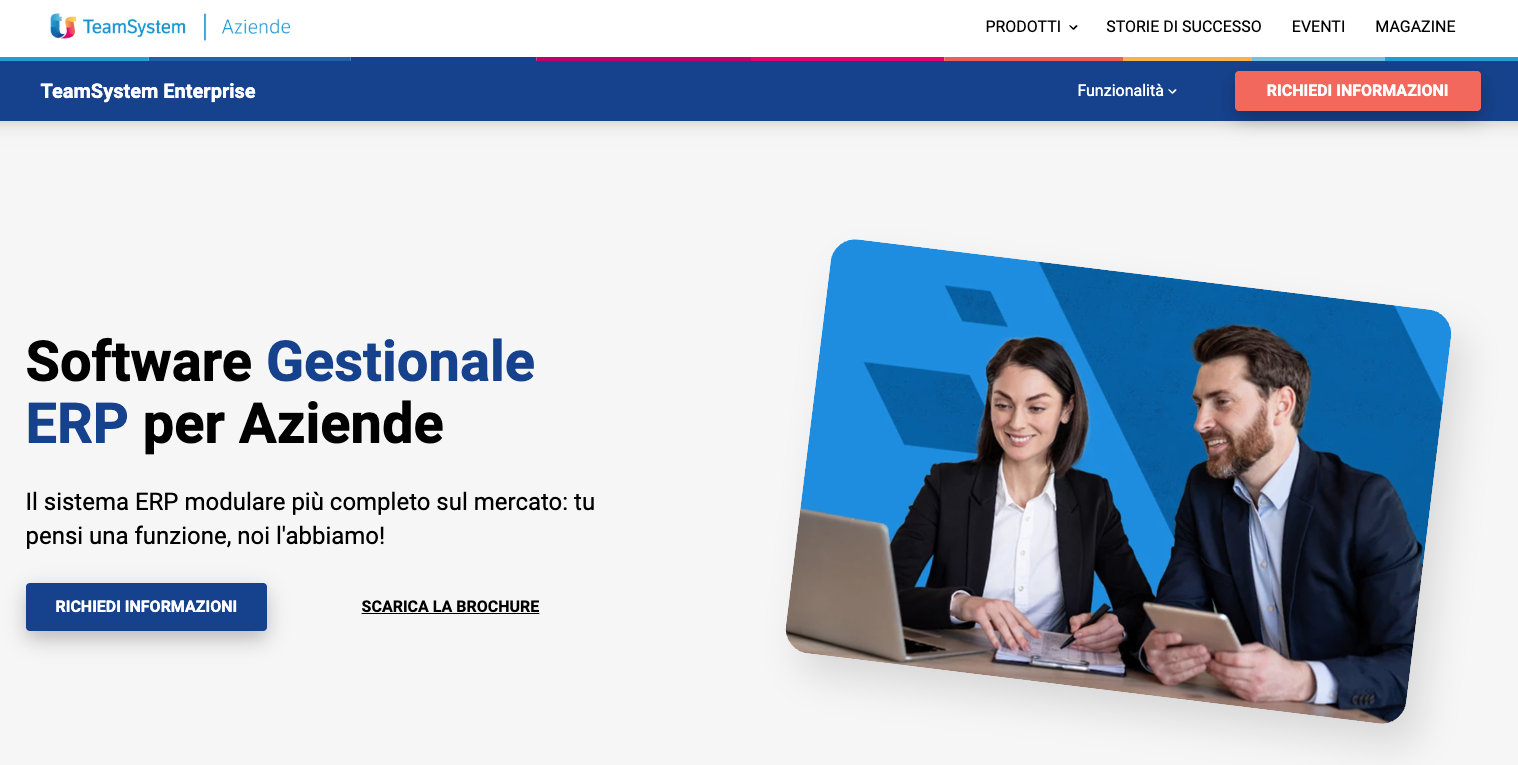
TeamSystem offers a full ERP suite focused on accounting, e-invoicing, payroll, manufacturing, document management and digital services.
The platform is built for Italian companies looking for operational simplicity, tax compliance, and native alignment with local financial obligations.
In Italy
Widely adopted among SMEs and professional services — thanks to a broad range of integrated modules (e.g. CRM, digital archiving, payroll, HR).
Covers Italian regulatory requirements fully, with regular updates and industry-specific verticals.
Especially strong in the consultant and accountant segment, and in companies that outsource fiscal processes to external advisors.
In Spain
Not available. TeamSystem is built exclusively for the Italian market. No presence or localised support for Spanish tax or legal frameworks.
Pros
- Fully up-to-date with Italian tax and regulatory requirements
- Modern UI compared to other legacy Italian ERPs
- Strong internal integration across accounting, invoicing, payroll and HR
- Ideal for SMEs looking for an all-in-one system without complex IT infrastructure
Cons
- Limited flexibility for advanced workflows (e.g. multi-level approvals, spend governance)
- External integrations (e.g. Power BI, payments, approval tools) can be inconsistent
- Not suitable for complex group structures or international operations
- Less adaptable for fast-scaling companies with evolving finance processes
Our take
Value for the finance team: ⭐⭐⭐⭐☆ (very solid for SMEs and advisory firms)
Local compliance (IT/ES): ⭐⭐⭐⭐⭐ in IT / ⭐☆☆☆☆ in ES
Integration & flexibility: ⭐⭐⭐☆★ (strong in-suite, weaker with third parties)
Local support & adoption: ⭐⭐⭐⭐⭐ (widespread across Italy)
Limitations to consider: Scalability, custom workflows, third-party tools
Zucchetti ERP: Italian-built ERP with full tax coverage, strong modularity, and modern finance trade-offs
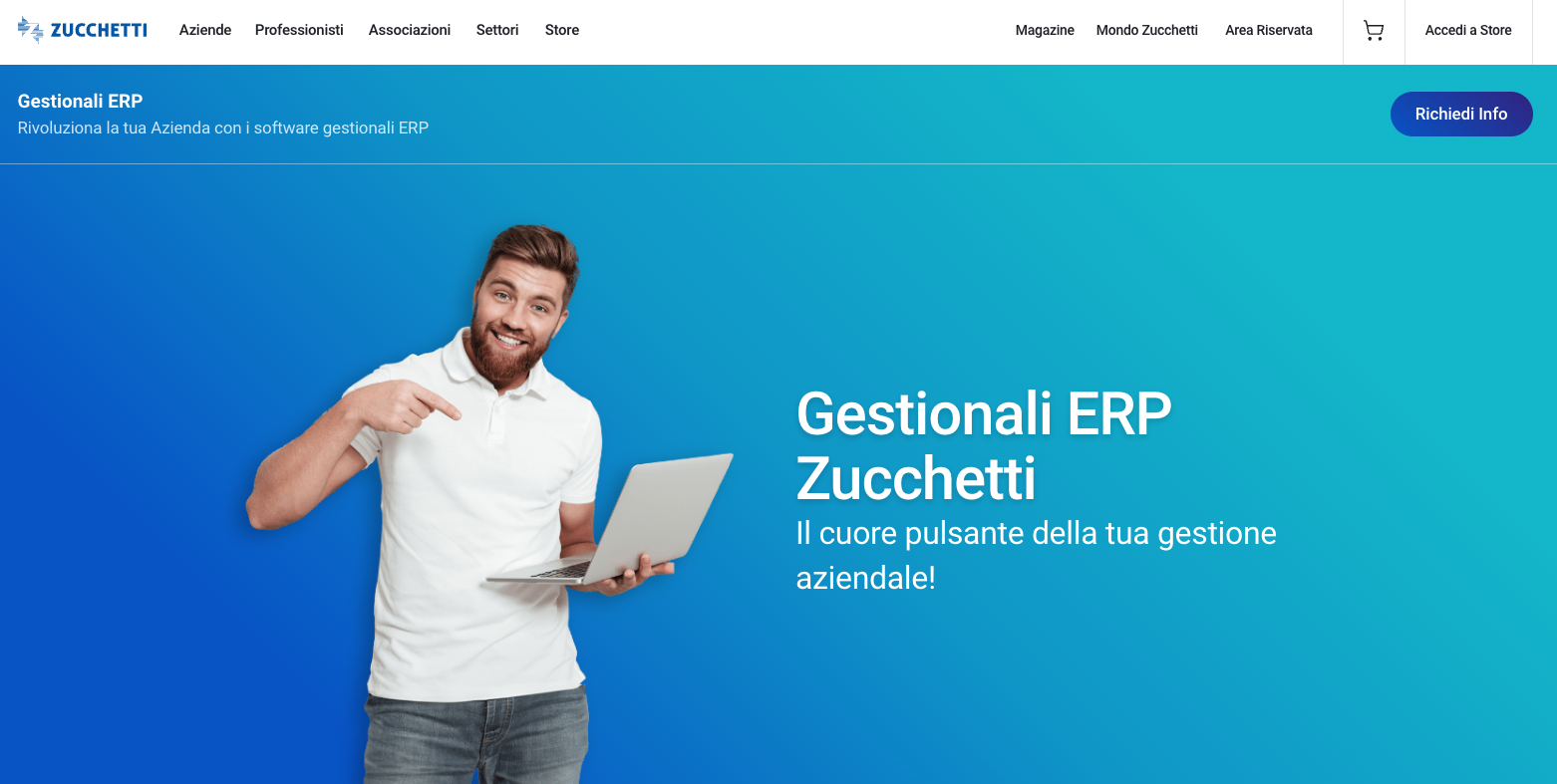
Zucchetti is one of the most widely used ERP platforms in the country, especially in the mid-market. It offers comprehensive localisation: FatturaPA, digital archiving, withholding tax, CU, statutory reporting, VAT ledgers, split payment, and cross-border filings.
The widespread availability of local support — both direct and through resellers — is a major asset for firms without in-house IT.
In Italy
È uno degli ERP più usati in Italia, soprattutto nel mid-market. Offre localizzazione completa: FatturaPA, conservazione sostitutiva, ritenute, CU, bilancio civilistico, libri IVA, spesometro, split payment, esterometro.
La disponibilità di supporto locale, sia diretto che tramite rivenditori, è un vantaggio competitivo importante per chi non ha un team IT interno.
In Spain
Very limited presence. Some international partners offer support for multi-country rollouts, but Zucchetti remains a natively Italian ERP designed for local use. Not suitable for companies with a strong footprint in Spain.
Pros
- Native and constantly updated Italian tax compliance
- Complete ecosystem: accounting, HR, logistics, manufacturing
- Dense support network across the Italian territory
- A solid fit for companies with complex operations but limited IT presence
Cons
- UI is less modern than cloud-native competitors
- Modular structure is rigid — some components can’t be updated or decoupled easily
- External integrations (e.g. BI, approval flows, payments) can be difficult
- Not suitable for international companies or multi-country groups
Our take
Value for the finance team: ⭐⭐⭐⭐☆ (excellent within the Italian market)
Local compliance (IT/ES): ⭐⭐⭐⭐⭐ in IT / ⭐☆☆☆☆ in ES
Integration & flexibility: ⭐⭐⭐☆★ (partner-dependent and partly rigid)
Local support & adoption: ⭐⭐⭐⭐⭐ (market leader in Italy)
Limitations to consider: Internationalisation, UX, modular structure
Adempiere ERP: Open-source ERP for Italian businesses with in-house technical teams
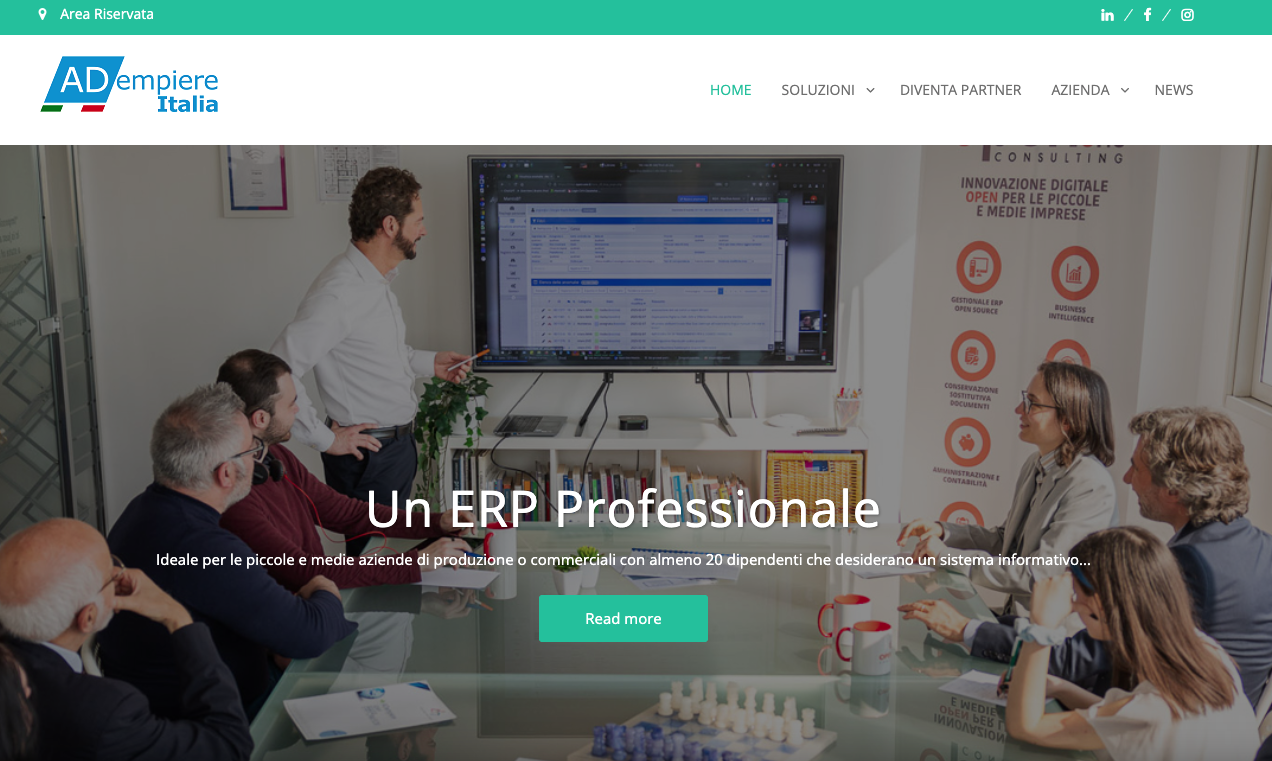
Adempiere is an open-source ERP originally developed as a fork of Compiere.
It offers a full suite covering accounting, procurement, sales, inventory, manufacturing and CRM.
Its main strength is flexibility: the code is open, fully customisable, and adaptable to complex workflows — provided there’s internal tech capability or a skilled integration partner.
In Italy
Used by some SMEs, manufacturing firms and consortia with dedicated IT departments or system integrators.
Italian tax compliance can be implemented, but nothing is available out-of-the-box: no prebuilt packages for FatturaPA, CU, withholding, etc. Best suited to organisations seeking a licence-free ERP framework to customise on their terms.
In Spain
Similar to Italy: adopted by businesses looking for an open-source alternative to commercial vendors. Spanish localisation exists as a community-led initiative, but requires direct implementation or local partner support.
Pros
- No licence fees: full code access and total freedom to customise
- Modular, stable foundation for finance, logistics and manufacturing
- Active developer community with technical documentation available
- Ideal for technical teams seeking full control over their ERP stack
Cons
- No official support — relies on community or external integrators
- Tax localisation isn’t native: requires custom development
- Outdated UX compared to modern cloud platforms
- Steep adoption curve for finance teams without IT support
Our take
Value for the finance team: ⭐⭐☆☆☆ (only with strong technical support)
Local compliance (IT/ES): ⭐☆☆☆☆ (fully manual setup)
Integration & flexibility : ⭐⭐⭐⭐☆ (maximum, but technical)
Local support & adoption: ⭐⭐☆☆☆ (community + integrators)
Limitations to consider: UX, localisation, lack of direct support
ERP platforms with strong presence in Spain: localisation, agility, and on-the-ground support
The Spanish market comes with specific tax, administrative and operational requirements that aren’t always covered by large international ERPs.
From SII (Sistema Inmediato de Información) to the gestione autonómica dell’IVA and decentralised reporting, businesses operating in Spain need tools that manage local complexity — without hidden costs or unmanageable technical dependencies.
In this section, we look at the most widely used ERP platforms in Spain in 2025, assessed based on:
- native Spanish tax compliance
- fit for local finance and operations teams
- technical support and partner networks on the ground
- limitations to watch for in multi-country or high-complexity rollouts
Odoo ERP 2025: Modular, web-based ERP with localised tax support for Spain
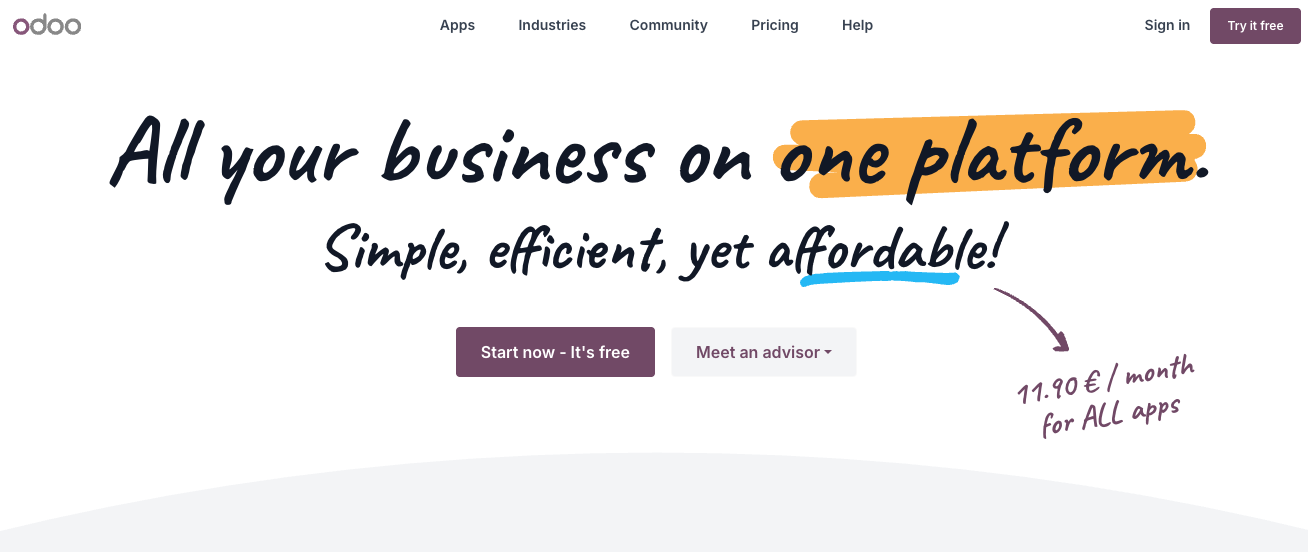
Odoo is an open-source ERP suite — modular, fully web-based, and built to scale. It covers all key business functions: accounting, sales, procurement, inventory, CRM, HR, and manufacturing.
Its main strength is flexibility: each module can be activated as needed, supported by a vast marketplace and an active Spanish-speaking community.
In Spain
Widely adopted among SMEs, agencies and digital businesses. Odoo supports Spanish tax law through localised modules covering SII, VAT, IRPF and statutory reports.
Thanks to a strong technical community in Spain and a broad partner network, it’s quick to implement even for lean teams.
In Italy
Growing presence, but less mature than in Spain. Some partners offer localised modules for Italian tax compliance, but it requires technical input and bespoke setup.
A good choice for companies that want control and flexibility without relying on proprietary vendors.
Pro
- Modular, fully cloud-native architecture
- Rich marketplace of plugins, industry verticals and operational tools
- Clean, modern interface — accessible for non-technical teams
- Excellent fiscal coverage in Spain via official and community modules
- No licence lock-in: scalable and cost-transparent
Cons
- Implementation quality depends heavily on the chosen partner
- Some features (e.g. advanced reporting, approval flows) require custom work
- Italian localisation isn’t official — needs third-party or in-house development
- Less suited to organisations with complex governance or multi-level control
Our take
Value for the finance team: ⭐⭐⭐⭐☆ (very effective with the right partner)
Local compliance (IT/ES): ⭐☆★☆☆ in IT / ⭐⭐⭐⭐☆ in ES
Integration & flexibility: ⭐⭐⭐⭐⭐ (modular, open and adaptable)
Local support & adoption: ⭐⭐⭐⭐☆ (strong presence in Spain)
Limitations to consider: Governance complexity, implementation consistency
Cegid ERP 2025: Full SII, VAT and payroll coverage for Spanish SMEs
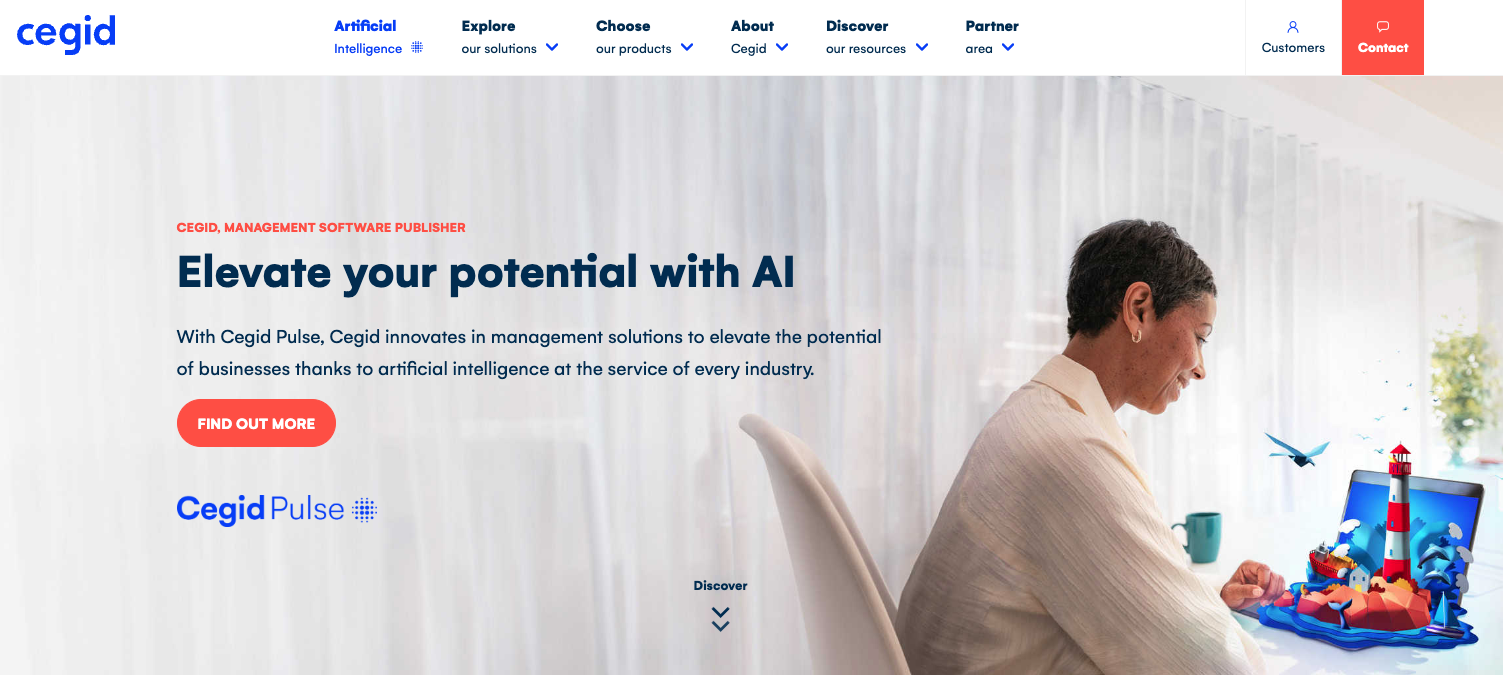
Cegid is a business management suite developed in France, with strong presence in Spain and across several European markets.
It offers integrated modules for accounting, e-invoicing, document management, payroll, HR and regulatory compliance. Designed for mid-sized businesses and professional firms looking for tax reliability and operational simplicity.
In Spain
Well adopted among SMEs, accounting firms and service providers. Fully supports Spanish fiscal requirements: SII, IVA, IRPF, statutory reporting and regional (autonómica) compliance.
Particularly strong in professional services, retail and HR, thanks to tailored verticals. Direct local presence and native-language support make adoption easier for smaller teams.
In Italy
Not present or supported. No localisation for Italian tax rules. Not suitable for multi-country rollouts that include Italy.
Pros
- European ERP with full tax localisation for Spain
- Broad coverage of core business functions: accounting, HR, payroll, compliance
- Modern UI and high usability — even for non-technical teams
- Stable platform with regular updates and direct support
Cons
- Limited module depth in advanced areas (e.g. manufacturing, logistics, intercompany)
- External integrations need case-by-case evaluation
- Less suited for structured groups or businesses with complex governance needs
- Not expandable outside its current localised geographies
Our take
Value for the finance team: ⭐⭐⭐⭐☆ (great fit for Spanish SMEs)
Local compliance (IT/ES): ⭐☆☆☆☆ in IT / ⭐⭐⭐⭐⭐ in ES
Integration & flexibility : ⭐⭐⭐☆★ (strong for core, limited in scope)
Local support & adoption: ⭐⭐⭐⭐☆ (direct presence in Spain)
Limitations to consider: Scalability, module depth, international rollout
Spyro ERP in Spain: Vertical ERP for industrial companies with full operational control
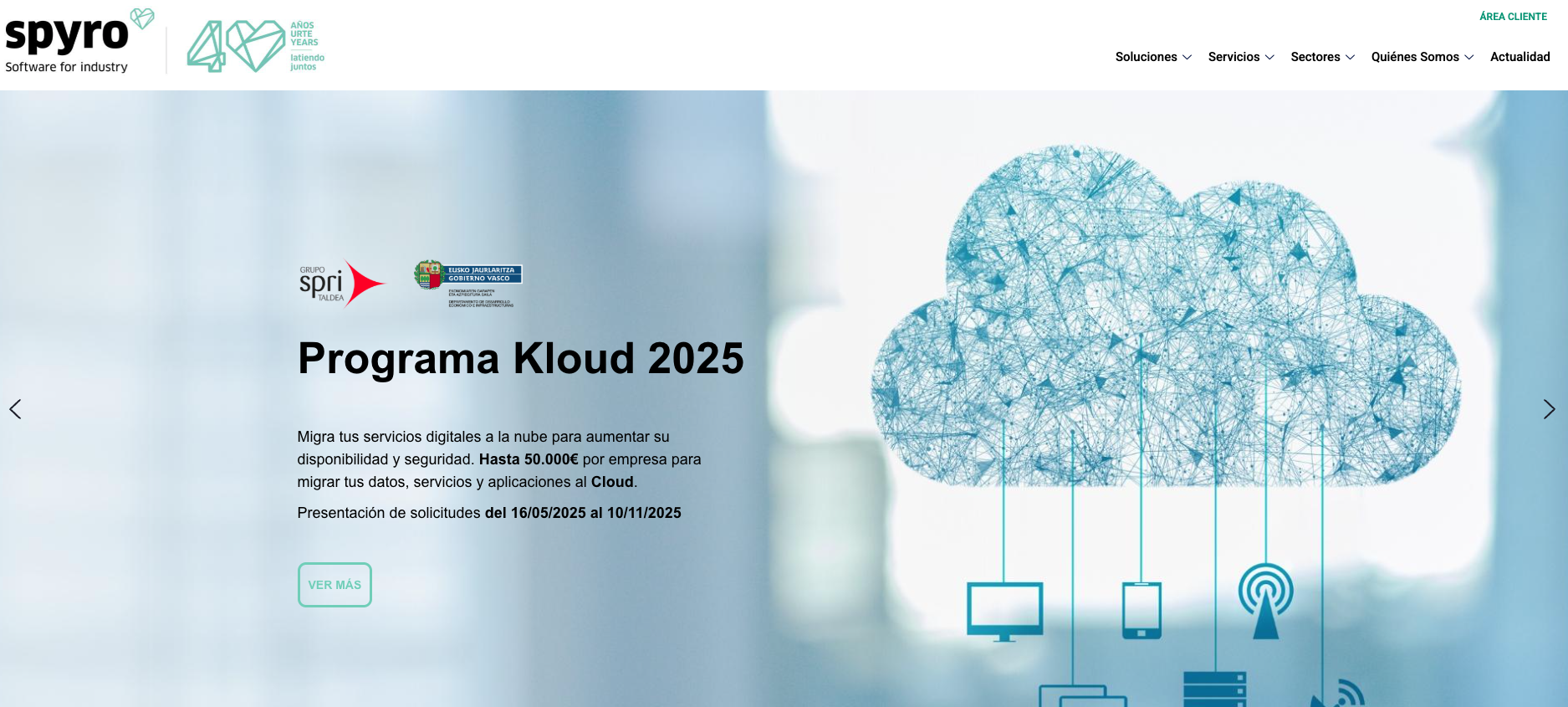
Spyro is a Spain-based ERP system designed for industrial businesses with both production and distribution operations. It’s built to cover the full operational cycle — from sales and procurement to accounting, manufacturing, quality, maintenance, logistics and business intelligence.
Its strength lies in day-to-day operational execution and process control.
In Spain
Used primarily in northern Spain (Basque Country, Navarra, Cantabria) and favoured by mid-sized industrial companies.
Fully localised for Spanish tax law, including SII, VAT, accounting and fiscal reporting. Direct on-the-ground support, in-house technical teams, and a constantly evolving roadmap.
Valued more for practical execution than international scalability.
In Italy
Not available. No localisation or support for Italian tax rules. Not suitable for companies with Italian operations or multi-country structures.
Pros
- Strong vertical ERP for production, quality, maintenance and logistic
- Tailored for structured industrial supply chains
- Fully compliant with Spanish tax and fiscal requirements
- Direct technical support and local presence in Spain
Cons
- Limited geographic reach: highly regionalised product
- Admin modules are less flexible than international ERPs
- External integrations and APIs need evaluation on a case-by-case basis
- No scalability beyond the Spanish market
Our take
Value for the finance team: ⭐⭐⭐☆★ (strong for industrial SMEs)
Local compliance (IT/ES): ⭐☆☆☆☆ in IT / ⭐⭐⭐⭐⭐ in ES
Integration & flexibility: ⭐⭐⭐☆★ (solid in ops, limited elsewhere)
Local support & adoption: ⭐⭐⭐⭐☆ (direct support in northern Spain)
Limitations to consider: Scalability, API openness, finance module scope
ERP in Europe, Italy and Spain: what really changes across platforms
Each ERP we’ve analysed has real strengths — and real limits.
Some are built for tax compliance, others for industrial control, others for cloud scale. But none of them does everything. None of them works without conscious, upfront trade-offs.
So the real question isn’t “Which ERP is best?” It’s: Which one actually works for how your business operates?
- Are you an Italian SME navigating complex tax rules? You need native localisation and local support.
- Are you part of a European group with distributed governance? You need flexibility, API access, unified visibility.
- Does your finance team need autonomy? Then your ERP must let them act — not just record.
- Do you have a mature IT function to manage open-source? Or do you need fast rollout and steady support?
And then there’s the most overlooked variable of all: What does the ERP leave out?
WithLess makes your ERP more useful: control over spend, renewals and approvals
And here’s where WithLess comes in.
We work alongside your system — and make it useful where it actually matters.
ERPs record. Comply. Consolidate. But they don’t always help finance teams see what’s happening — as it happens.
WithLess adds what every ERP leaves out: real-time visibility, recurring spend control, trackable approvals, and distributed governance.
What we add to the system you already use
- Context for approvers No ERP shows — in real time — who’s spending, on what, and under which budget. WithLess does.
- Native renewal tracking Many recurring costs never pass through your ERP. WithLess catches them before they become surprises.
- Distributed visibility, not central bottlenecks Give teams access without losing control. Your ERP logs spend after the fact. WithLess flags it beforehand.
- Frictionless operations No duplicate flows. No manual workarounds. WithLess runs alongside your ERP — seamlessly.
Your ERP is in place. But control is built elsewhere.
A solid ERP is essential.
But on its own, it won’t prevent out-of-context approvals, invisible renewals, or last-minute budget blowouts.
WithLess adds what even the most advanced systems miss: visibility before spend, traceability in the flow, and distributed governance.
We don’t replace your ERP. We work with it — and make it work better, where it counts.
Want to see if your setup covers the full flow?
In 30 minutes, we’ll show you where your ERP stops — and how to complete the picture.
The smartest way to manage business spend.
WithLess uses AI to control spend in real time, automate finance ops, and eliminate manual work.
Let's talk

